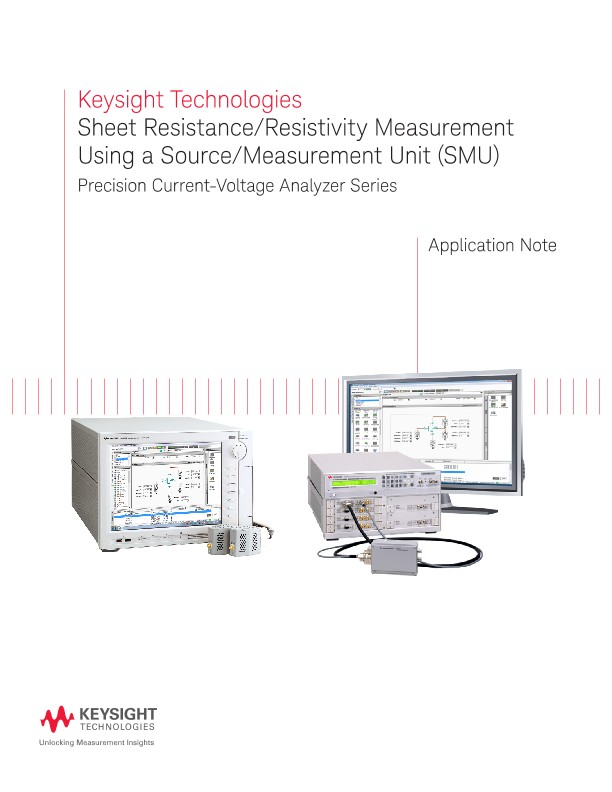
Sheet Resistivity and Sheet Resistance Measurement Using an SMU
Application Notes
Introduction
Resistivity is a fundamental characteristic of electrical materials. As well as being the basic measurement for research into new materials such as graphene, carbon nanotube, etc., it can also be used to monitor and control the thin layer deposition process for wafer fabrication, where sheet resistance measurement is typically performed to obtain the resistivity.
This application note explains the measurement process and provides advice and practical examples using the Keysight Technologies, Inc. Precision Current-Voltage Analyzer and EasyEXPERT software. Because resistivity measurement requires equipment that can source the current and measure the voltage or vice versa, the Source/Measurement Unit (SMU) of the analyzer enables you to facilitate the measurement easily and quickly, with the use of the powerful analysis capabilities of EasyEXPERT software.
Table of Contents
- Introduction
- Basics of Resistance Measurement
- What is a sheet resistance measurement
- Ideal resistance measurement
- More significant errors in low resistance measurement
- Techniques to eliminate errors in low resistance measurement
- Van Der Pauw technique for non-square shaped sheet resistance
- Low resistance measurement using SMU/EasyEXPERT Software
- Summary
What is a sheet resistance measurement?
When measuring the resistance of sheet form materials, confusion can arise between measuring the resistance in the sheet form and the sheet resistance/resistivity. Some examples of this are shown in the following.
The resistor in sheet form
Figure 1 shows two examples of sheet form resistors. The resistor is formed as a narrow line in the center between the contact pads. Figure 1(a) has two contact pads and Figure 1(b) has four pads. In this case, the unit of resistance measurement is ohm (Ω).
Sheet resistance/resistivity
Sheet resistance/resistivity is the resistance of a square of the conductive thin film with uniform thickness. The measurement unit typically used is Ω/square. The sheet resistance is measured using the Van Der Pauw technique with example test structures as shown in Figure 2.
When the sheet resistance is foursquare shaped as shown in Figure 2, the sheet resistance can be more easily obtained with a simple measurement. Figure 2 (a) and (b) is an example of the metal film fabricated with four contact pads. Figure 2(c) does not have the contact pads, and measurement has to be made by contacting the four corners of the sheet. Sheet resistance or resistivity Rs can be obtained using the following formula.
RS = p/ln2 x V23/I14
Where:
Rs= Sheet resistance measured using a Greek cross bridge or Van der Pauw sheet (ohm/square).
V23= Voltage measured between contacts 2 and 3, or two adjacent pads.
I14= Current forced between contacts 1 and 4, or two adjacent pads.
In this application note, the measurement method mainly discussed is the Van Der Pauw method.